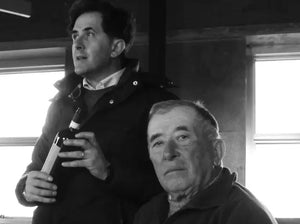Blog » Orange
-
Trebbiano on the Skins: Paolo Bea Arboreus Bianco
Paolo Bea is most famous for its wildly interesting take on Montefalco's Sagrantino red grape variety, but today, I’d like to pivot to their orange wines. Paolo's son, Giampiero, was one of the first naturalists in Italy to adopt the practices of Josko Gravner and Stanko Radikon (the Friulian winemakers who repopularized the ancient-old tradition of fermenting white grapes on their skins). Today, Bea’s Arboreus is considered a benchmark in the world of orange wine, and it has a fascinating backstory.
These Trebbiano Spoletino vines were planted below oak trees on the Paolo Bea estate over 120 years ago and have completely wrapped themselves around the trees (Hence the name Arboreus). Once harvested and de-stemmed, the grapes ferment on the skins for several weeks and spend a minimum of two years on the lees in stainless steel tanks. Gravner and Radikon produce the most concentrated, structured examples of orange wine you’ll come across and are undoubtedly the pinnacles in this category. I more often gravitate toward Paolo Bea's style, though. Arboreus has that same deep amber hue, golden stone fruit showing apricot and yellow plum, powerful tannins—but with an added streak of freshness that balances its other components. Note: This is a great food wine with the tannins to take one heavier foods than typical whites (Lamb kabobs and saffron rice were on my mind when we tasted this).
If you prefer your orange wines, well, less orange-y, consider Lapideus. The grape variety, soil type, and winemaking are the same as Arboreus (same skin-contact and élevage regimen). Except, these 80-year-old Trebbiano Spoletino vines, trained in the traditional cordon method, grow in a cooler microclimate, resulting in a leaner, more acid-driven orange wine. Paolo Bea provides a counterpoint to the argument that this style of wine can’t be terroir-driven! There are also Monastero Suore Cistercensi’s orange wines, Coenobium and Ruscum, as value-driven options. Based in Lazio, these wines are farmed and produced by the Sisters of the Cistercian order, with some guidance from Giampiero.
Lastly, I highly recommend reading Giampiero's interview with Sprudge Wine, which includes a photo of those stunning Arboreus vines. If you are a skin-contact fanatic, like me, Paolo Bea is a must-try, as these were the among the defining wines for what's now a booming category.
.svg?v=162776257677185172071724397232)



